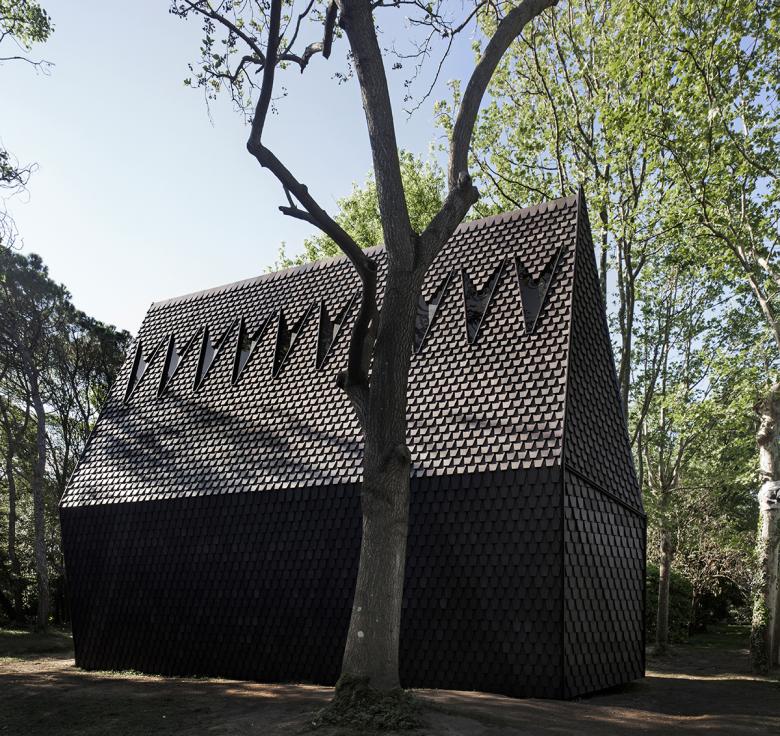The Asplund Pavilion, designed by architects Francesco Magnani and Traudy Pelzel of Italy's MAP studio, is the cornerstone of the first Pavilion of the Holy See at the Venice Architecture Biennale. Covered in ALPI wood surfaces inside and out, the small pavilion was inspired by Gunnar Asplund's Woodland Chapel and exhibits drawings, photographs and a model of that 20th-century masterpiece.
Project: Asplund Pavilion, 2018
Location: Fondazione Cini, San Giorgio Maggiore, Venice
Client: Pontificium Consilium de Cultura
Architect: MAP studio, Venice
Design Principals: Francesco Magnani, Traudy Pelzel
Assistants: Matteo Sirinati, Chiara Dalla Valle, Alberto Zago (model)
Consultant: Luigi Cocco
Manufacturer: ALPI
Products: Xilo 2.0 Striped White (interior), custom dark gray shingles (exterior)
Built Area: 33 m2
Tucked into a distant corner of San Giorgio Maggiore, a visit to the Vatican Chapels requires a bit of a trek from the vaporetto stop on the opposite end of the small island. It is a worthwhile walk that starts at the front of Andrea Palladio's namesake church and ends in one of the few wooded spots in all of Venice. The ten chapels, curated by Italian architectural historian Francesco Dal Co and designed by many familiar names, are sprinkled about the property of Fondazione Cini. They are experienced through a leisurely stroll that starts with the Asplund Pavilion and its small exhibition.
Dal Co set up the pavilion as "the first episode encountered at the entrance of the Pavilion of the Holy See," aligning it with the way "Asplund defined the chapel as a place of orientation, encounter and meditation." MAP studio describes their design on their website (with their emphasis) as "a sort of domesticated absolute which borrows from traditional Nordic woodwork and in particular to the Stavkirke, a reinterpreted vernacular lexicon." Eleven meters (36') long and eight meters (26') high, the dramatically pitched roof is structured by ten lamellar wood portals and covered in dark shingles outside. The shingles are broken up by V-shaped skylights that bring natural light to the lighter interior surfaces.
Watch a time-lapse video of the pavilion's construction:
Just as each of the ten chapels feature pairs of architects and manufacturers/fabricators, the Asplund Pavilion was produced by ALPI, the Italian "leader in the production of decorative surfaces in reconstituted wood veneer." Founded in 1919 as a cabinetmaking workshop, ALPI ventured into industrialized production of veneers in the 1960s. It is now billed as an "eco-responsible" product due to its management of a half-million hectares (1.2 million acres) of forest and control of the process "from the log to the finished product."
At the Asplund Pavilion, ALPI had to venture beyond its usual practices: "In just a few months we have developed this experimental product that is a complete novelty in the context of our output." Vittorio Alpi, the head of ALPI and the founder's grandson, is describing the 9,000 dark gray shingles covering the exterior. The interior, on the other hand, is faced with a standard product: ALPI Xilo 2.0 Striped White, developed in collaboration with Piero Lissoni.
The Asplund Pavilion and Vatican Chapels are on display until 25 November 2018 for the duration of the Biennale, after which the buildings will be dismantled and shipped to Catholic communities in need.




